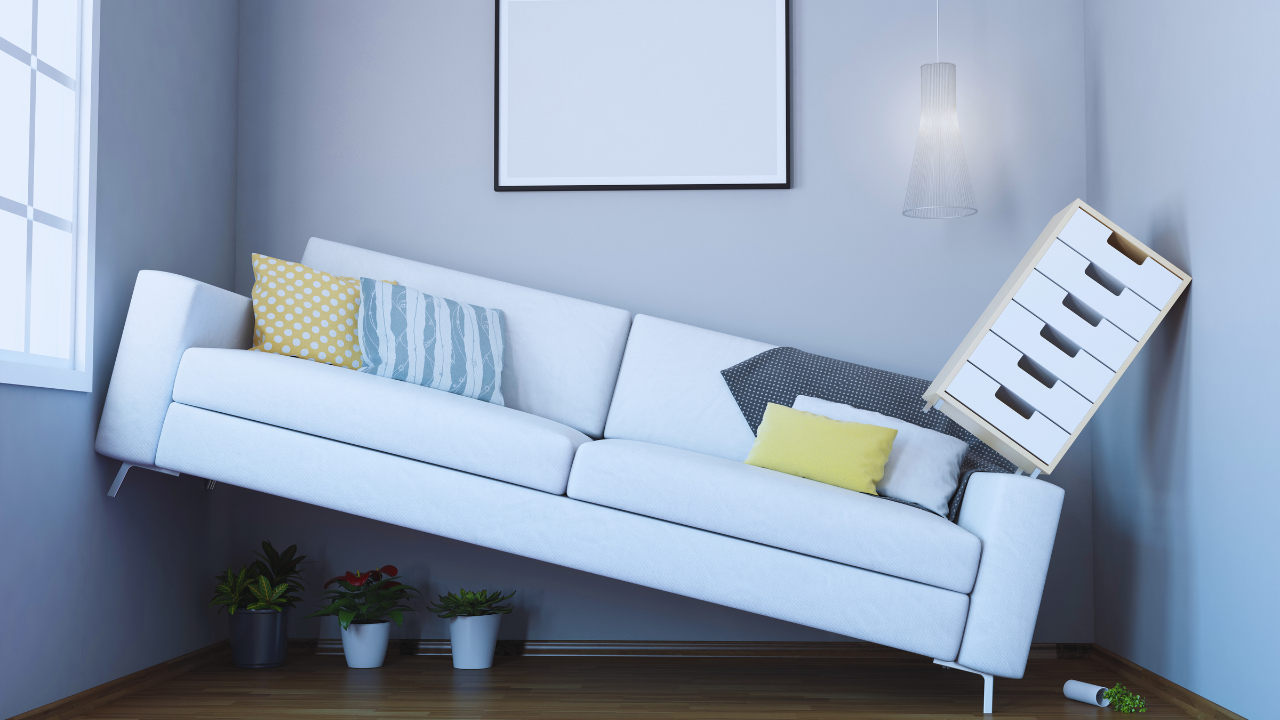Table of Contents

Small rooms can often feel cramped and limiting, but with a few clever design tricks, you can transform them into spacious, airy spaces. Whether it’s your bedroom, living room, or any compact area in your home, these ideas will help you maximise space and make your room look much bigger than it is.
1. Use Light Colours
Light colours create the illusion of space by reflecting natural light. Opt for shades like white, light gray, soft pastels, or cream. Dark colours absorb light, making the room feel more enclosed, so it’s best to avoid them in small spaces. For a cohesive look, pair light walls with light-coloured furniture to maintain an open feel.
2. Mirrors for the Illusion of Depth
Mirrors are one of the best tools to make a small room look bigger. They reflect light and create the illusion of depth, making the room feel twice as spacious. Place a large mirror opposite a window to reflect outdoor views or use a full-length mirror to elongate the room. Consider using mirrored furniture, like a mirrored coffee table, to add style and more depth without taking up visual space.
3. Furniture with Legs
Choosing furniture with exposed legs, such as a sofa or a chair with a raised base, allows the eye to travel through the room. This makes the floor space seem larger and prevents your furniture from looking bulky. Opt for minimalist designs that don’t overpower the room and offer more visible floor area.
4. Maximise Vertical Space
When floor space is limited, make the most of your walls. Use tall shelving units, wall-mounted cabinets, or vertical artwork to draw the eye upward. This helps create the illusion of height, making the room feel bigger. Install floor-to-ceiling curtains to give the illusion of taller windows and higher ceilings.
5. Multi-Functional Furniture
In a small room, every inch counts. Furniture that serves multiple purposes can save space while maintaining style. Consider a bed with storage drawers underneath, a sofa that converts into a bed, or ottomans that can double as storage units. Foldable furniture, like collapsible tables or foldable desks, can also help when you need more space for specific activities.
6. Declutter and Simplify
Clutter makes a small room feel chaotic and cramped. Keep only the essentials and get rid of items that don’t serve a purpose. A minimalist approach not only creates a cleaner look but also helps maintain a spacious feel. Use baskets, shelves, and storage units to organise and hide away small items that tend to clutter up surfaces.
7. Opt for Light, Airy Fabrics
Heavy drapes and bulky fabrics can make a room feel suffocating. Instead, use lightweight, sheer curtains and soft fabrics for bedding or upholstery. These materials allow natural light to filter in, which helps open up the space. Consider furniture and bedding with soft textures and avoid large, patterned textiles that may overpower the room.
8. Go for Large Rugs
Though it may seem counterintuitive, a large rug can actually make a small room feel bigger. Small rugs tend to break up the floor, while a large rug creates a unified look that ties the room together. Choose a light-colored rug with minimal patterns to keep the space open and cohesive.
9. Use Transparent or Acrylic Furniture
Furniture made from transparent materials like glass or acrylic tricks the eye by not blocking sightlines. A glass coffee table or acrylic dining chairs will make the room feel more open because they blend into the background while serving their function. Acrylic furniture can also be a stylish addition to a small room, adding modern flair without adding bulk.
10. Strategic Lighting
Proper lighting can make or break a room’s design. In small spaces, it’s crucial to use multiple sources of light rather than relying on one overhead fixture. Use wall sconces, floor lamps, and table lamps to evenly distribute light around the room and eliminate dark corners. Avoid large, ornate chandeliers or light fixtures that might overwhelm the room; instead, choose sleek, minimalist designs.

